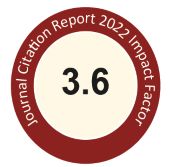Abstract
In Taiwan, the number of applications for inspecting imported food has grown annually and noncompliant products must be accurately detected in these border sampling inspections. Previously, border management has used an automated border inspection system (import food inspection (IFI) system) to select batches via a random sampling method to manage the risk levels of various food products complying with regulatory inspection procedures. Several countries have implemented artificial intelligence (AI) technology to improve domestic governmental processes, social service, and public feedback. AI technologies are applied in border inspection by the Taiwan Food and Drug Administration (TFDA). Risk management of border inspections is conducted using the Border Prediction Intelligent (BPI) system. The risk levels are analyzed on based on the noncompliance records of imported food, the country of origin, and international food safety alerts. The subjects of this study were frozen fish products, which have been under surveillance by the BPI system. The purpose of this study was to investigate the relevance between the noncompliant trend of frozen fish products using the adoption of the BPI system and the results of postmarket sampling inspections. The border inspection and postmarket sampling data were divided into two groups: IFI and BPI groups (corresponding to before and after the adoption of the BPI system, respectively). The Chi-square test was employed to analyze the noncompliant differences in products between before and after the BPI system adoption. Despite the number of noncompliance batches being statistically insignificant after the adoption of the BPI system, the noncompliance rate of frozen fish products at the border increased from 3.0% to 4.7%. Meanwhile, the noncompliance rate in the postmarket decreased from 2.1% to 1.9%. The results indicate that the BPI system improves the effectiveness of interception of noncompliant products at the border, thereby preventing the entrance of noncompliant products to the postmarket. The variables were further classified and organized according to the scope of this study and product characteristics. Furthermore, ordinal logistic regression (OLR) was employed to determine the correlations among border, postmarket, and major influencing factors. Based on the analysis of major influencing factors, small fish and fish internal organ products exhibited significantly high risk for fish body type and product type, respectively. The BPI system effectively utilizes the large amount of data accumulated from border inspections over the years. Additionally, real-time information on bilateral data obtained from the border and postmarket should be bidirectionally shared for effectively intercepting noncompliance products and used for improving the border management efficiency.
Recommended Citation
Tu, Wen-Chin; Tsai, Wan-Ling; Lee, Chi-Hao; Tsai, Chia-Fen; Wei, Jen-Ting; Lin, King-Fu; Wu, Shou-Mei; and Weng, Yih-Ming
(2024)
"Application and effectiveness of artificial intelligence for the border management of imported frozen fish in Taiwan,"
Journal of Food and Drug Analysis: Vol. 32
:
Iss.
1
, Article 2.
Available at: https://doi.org/10.38212/2224-6614.3490
Creative Commons License

This work is licensed under a Creative Commons Attribution-Noncommercial-No Derivative Works 4.0 License.


Abstract Image